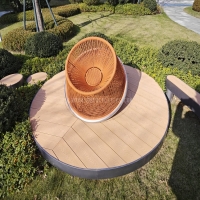Welcome to the website for landscape facilities products and knowledge.
How does the bin’s design ensure that it remains easy to operate for users with limited mobility?
For individuals with limited mobility, everyday tasks like disposing of waste can pose significant challenges. Accessible bin designs address these challenges by incorporating user-friendly features that prioritize ease of operation.
One key feature is the inclusion of ergonomic handles, which are designed to be easy to grip and require minimal force to open. These handles are often positioned at a comfortable height to reduce strain on the arms and shoulders. Additionally, many accessible bins feature foot pedals, allowing users to open the lid hands-free—a crucial advantage for those who rely on mobility aids like walkers or wheelchairs.
Lightweight materials are another important consideration. Bins made from lightweight yet durable plastics or composites are easier to move or empty, reducing physical exertion. Some models even include wheels or smooth-gliding bases for effortless relocation.
Sensor-activated lids are increasingly popular in accessible designs. These bins open automatically when they detect motion, eliminating the need for physical contact altogether. This technology is particularly beneficial for users with severe mobility limitations or arthritis.
Finally, thoughtful placement of the bin’s opening mechanism ensures it remains within easy reach for seated users, such as those in wheelchairs. By combining these features, modern bin designs empower individuals with limited mobility to maintain independence in their daily routines.
These innovations demonstrate how inclusive design principles can transform ordinary objects into tools that enhance accessibility and quality of life for all users.
Related search:

Recommendation
Swivel chair-Specialty steel structure woven rattan leisure chair with rotatable design